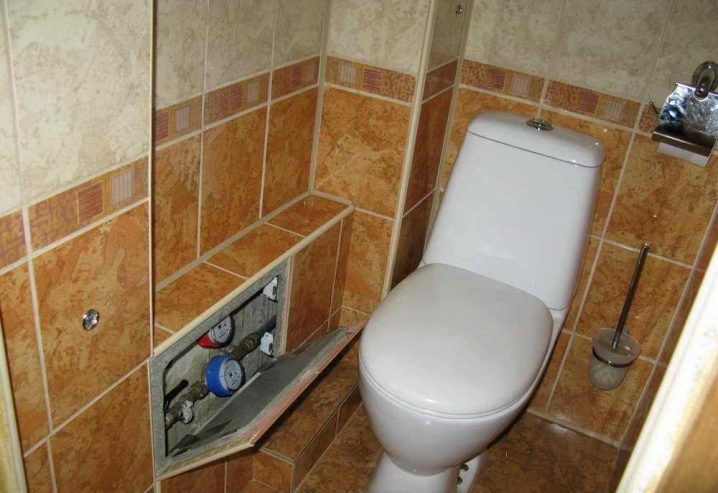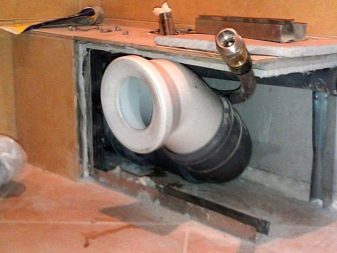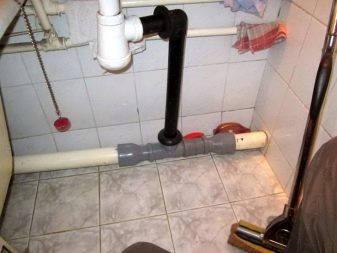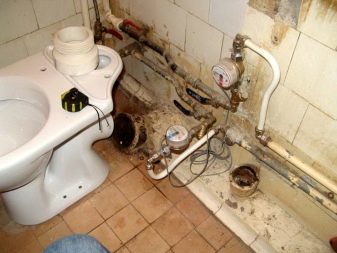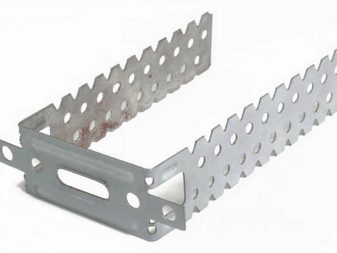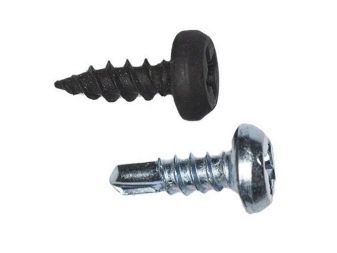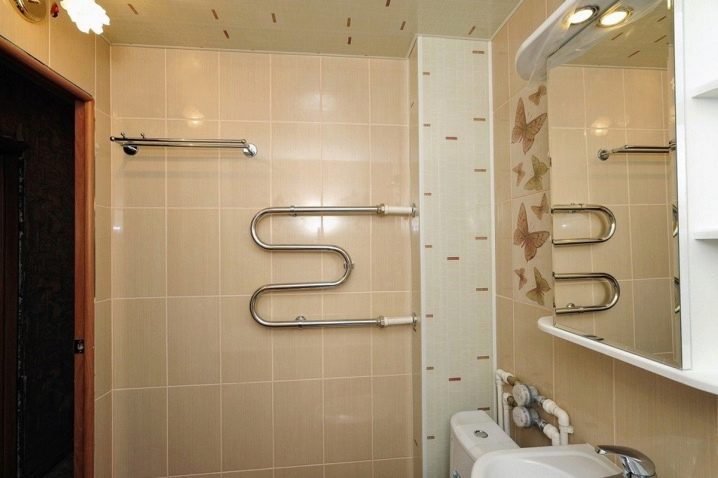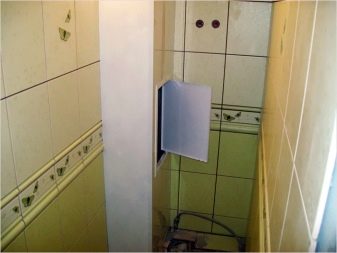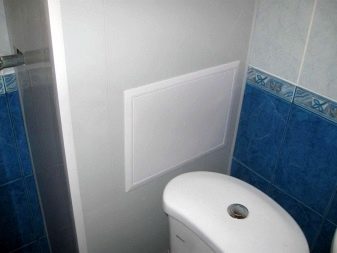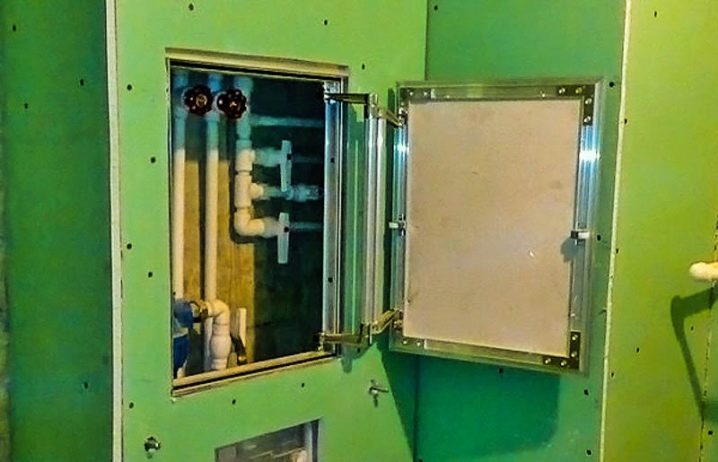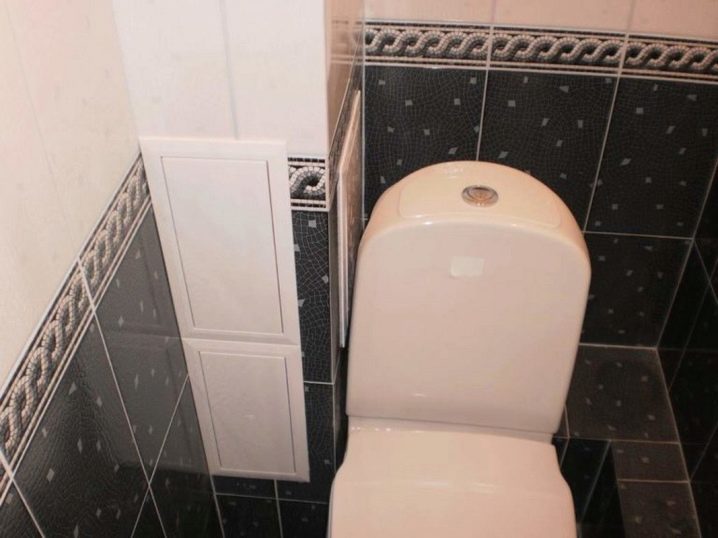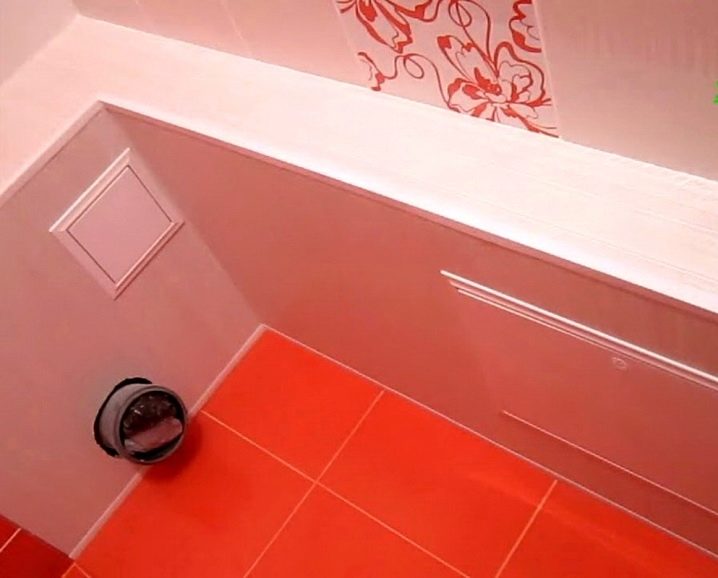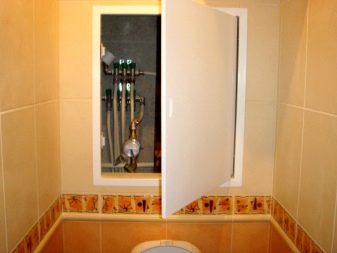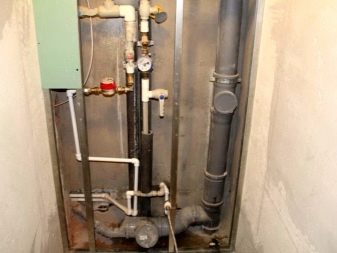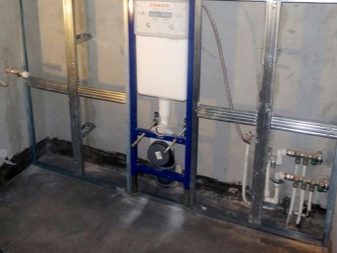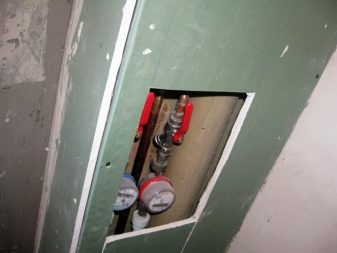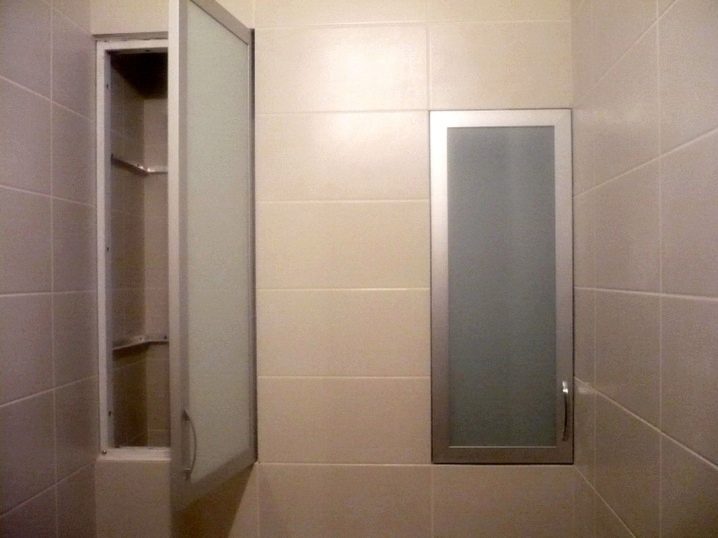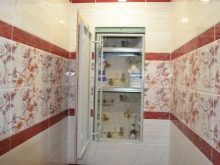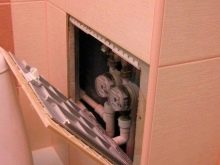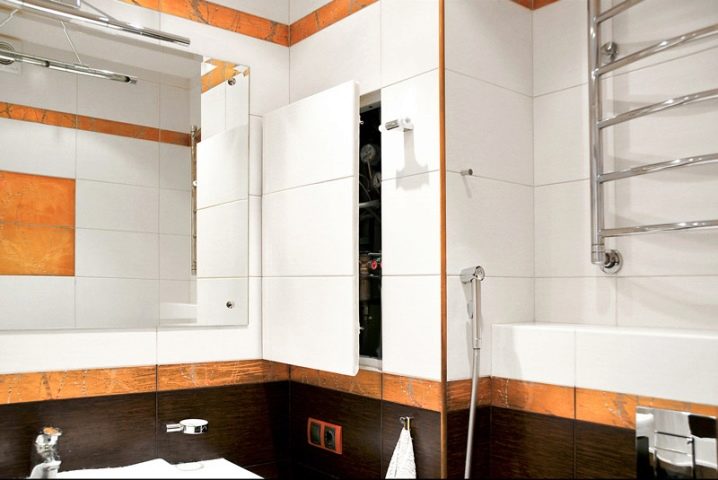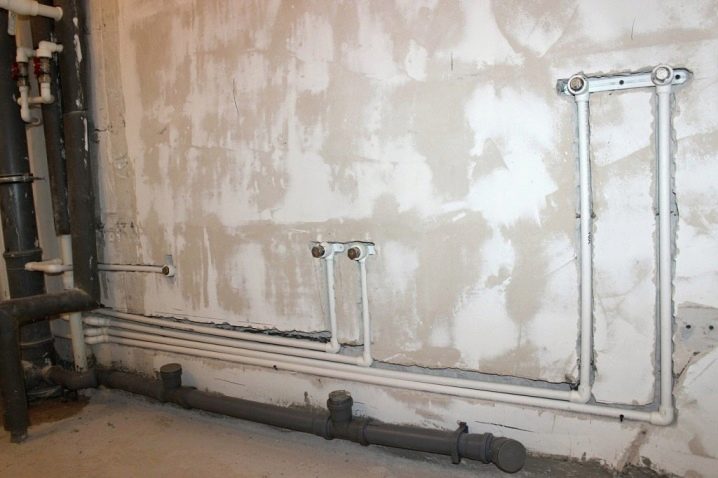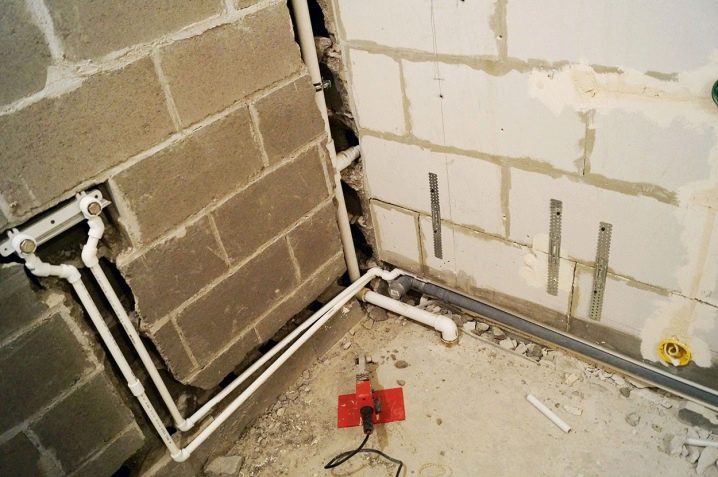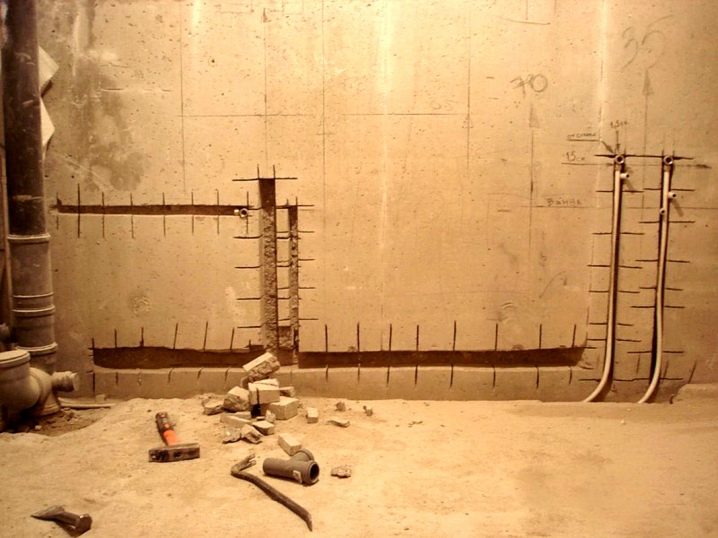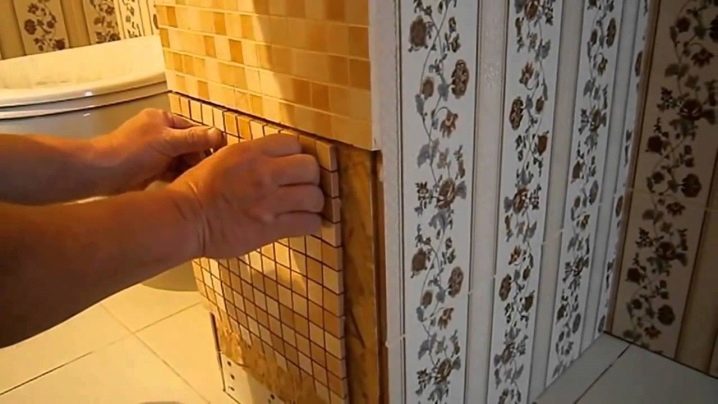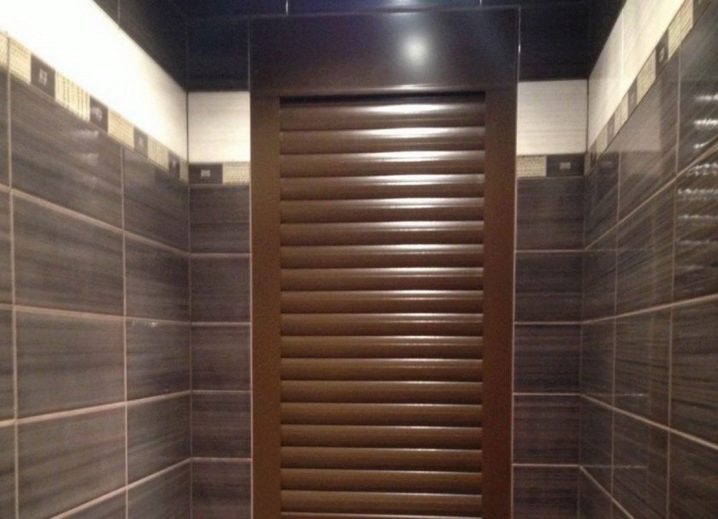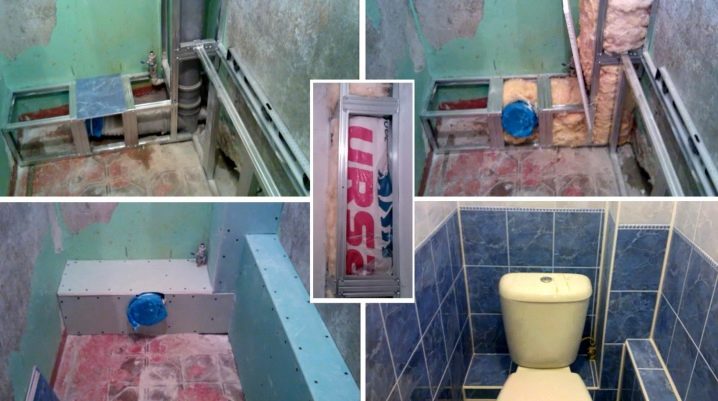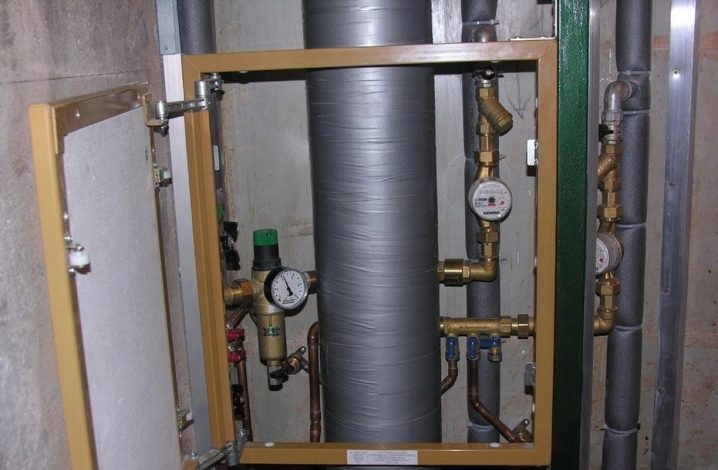How to hide the pipes in the toilet?
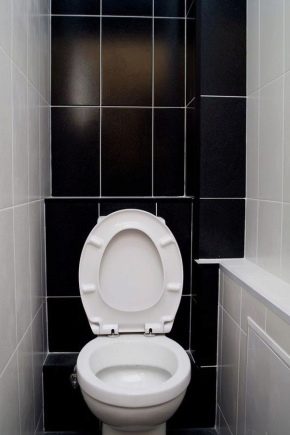
On the relatively modest area of the toilet there are always many sewers. Any technical units do not look aesthetically pleasing and create the impression of unfinished repairs. Therefore, the question often arises how to hide the pipes in the toilet and give the interior an attractive look.
Where to begin?
Before you hide the pipes in the toilet, you need to carefully inspect the riser and other communications for damage, fix them if necessary. Proceeding with the preparation of drawings and the calculation of the material for the future construction should be after all technical issues have been resolved.For accurate calculation of raw materials, it is necessary to carefully make all measurements of the area on which the work will be performed.
Construction stores offer a large selection of finishes, but with whatever you have to work, you will need the following tools:
- screwdrivers;
- drill;
- screwdriver;
- construction level and tape measure;
- plastic saw or plasterboard cutting knife;
- scissors to cut the metal profile;
- screws and mounts for the profile.
Material selection
If you need to hide communications quickly, PVC panels will be the best choice. This is a cheap and versatile finish. The main thing is to choose the color and pattern that will harmoniously fit into the overall picture of the interior.
Plastic panels have several advantages:
- safe for health and the environment;
- installation of panels is not difficult;
- installation is possible in the shortest possible time;
- acceptable price;
- the ability to install a hatch for access to the counters or places where it may appear to flow;
- the ability to create structures consisting of individual parts;
- no need additional finish.
And also quickly and inexpensively, you can close the riser with plasterboard.The toilet is not as high humidity as the bathroom, but it is better to use a moisture-resistant type of material.
Drywall has all the advantages of panels. In contrast, this material requires additional finishing. But this disadvantage can be regarded as a virtue: drywall without finishing can be used under tile or any other decorative finish. Thus, the wall behind which the pipes are located will be indistinguishable from other walls in the toilet.
Design options
The design, which will hide the communication, is selected depending on some factors:
- the magnitude and nature of the directivity of the pipe;
- pipe location relative to each other;
- the presence of auxiliary devices and cranes;
- the overall situation in the room.
After analyzing these features, it will be easy to determine the type of future construction. The most common are several popular species.
Box
It is a simple construction that even a novice can handle. The framework is created from a metalprofile or wooden slats. Further, the base is sheathed with the material that was selected.Full or partial lining is possible depending on the availability of metering devices or taps near the riser. In this case, you must leave the window to have access to them.
The frame of the box can be sheathed with PVC-panels, moisture-resistant plywood or drywall. Drywall is usually decorated with the same materials as the main walls. There are ready-made box options. But this option may be more expensive. Making the box yourself, it is possible to immediately take into account all the nuances. While the finished box will have to be customized to the desired parameters.
The design of the box is presented in several configurations.
- False wall. A good solution is to hide several pipes at once. It looks aesthetic, but takes a lot of space.
- Square. It can be placed both vertically and horizontally, hiding the fan pipe. Suitable for rooms in which pipes are located in the corner.
- False wall oblique. The average option between the previous ones. The design is attached at an acute angle to the side or rear wall. As well as a false wall, it allows to hide several pipes, but saves a lot of space.
- Layered. Installed in the event of a chaotic arrangement of pipes in the toilet. To save space, create a box in the localization of communications.
Built-in sanitary cabinet
The construction with the doors on the wall behind the toilet is called a sanitary cupboard.
Using this method of masking, several tasks are solved at once.
- There is an additional niche for shelves on which cleaning products and accessories can be stored.
- Availability of doors does not complicate access to counters, filters, collectors and the pipeline.
- In case of pipe breaks, the cabinet will not impede access to the accident site. Replacing metering devices in the toilet with a sanitary cupboard will not be inconvenient.
The choice of material for the manufacture of doors is large enough. Especially popular are plywood, PVC panels, chipboard, metal, wooden or glass doors. You need to choose a material that will fit into the overall style of the interior. For example, in a toilet decorated with plastic, plastic doors would be appropriate. And for a country wooden house suitable doors made of wood.
Do not forget about the convenience of the location of the doors in the locker. They should be placed at a suitable height so as not to block access to the desired junction of pipes. Should be suitable and handles on the doors.
Installation of swing doors in the sanitary locker takes place like any other door, they are fixed to the hinges to the base. Conventional doors are suitable for a spacious toilet. Closer rooms are better to provide compact doors, accordions, sliding models or curtains.
Hidden installation - chipping
Shtabing is an alternative to decorative types of pipe masking. When hidden wiring is supposed to stitch parts in a specially punched ditches, which are called strobami. Such technological holes are made using a wall chaser or perforator. Pipes hidden in the floor screed also belong to the hidden gasket. In this case, the wiring is filled with a solution of concrete.
The main advantage of this type of masking is aesthetics. Communications are completely hidden in the wall. With the exception of the riser, whose diameter is too large, and it can not be embedded in the wall. The advantages include the complete safety of pipes, their damage during hidden installation is impossible.Significant space savings also apply to pluses.
The weakness of the method is the complexity, cost and unavailability of pipes. You can sew the pipes yourself, but you have to study a lot of literature so that everything works out correctly. The use of hidden installation may not be everywhere. The method will be good in private houses built of brick or solid blocks, as well as in high-rise buildings with walls of increased thickness. In other places, this method will go against SNIPs. The grooves significantly weaken the bearing walls, which are already heavily loaded.
Some requirements can significantly complicate installation:
- it is possible to sew up only one-piece pipes, free access to others is necessary;
- in the wall on which the work will be carried out, should not pass electrical wires;
- the linear expansion of the pipe material must be taken into account;
- It is necessary to use clamps to ensure good sound insulation.
It is recommended to create a detailed drawing before hiding communications using the gate. In the case of overhaul or emergency repair, it may be useful.
Hide beautifully
It is not always convenient to close pipes with auxiliary materials. In some cases, there is not enough space for complex structures, or the time for repair in the toilet may be limited. Sometimes it is enough to simply open the pipes when we close the communications with a partition, access to them is difficult, and this can be inconvenient.
External placement of communications
Pipes can be left in sight and not decorated, in case they look beautiful on their own. For example, metal communications in combination with plumbing from the same material are perfectly combined and fit into the interior of the toilet in the style of a loft, techno or high-tech. In a toilet with such a situation, they will become a matter of pride. But such pipes are expensive, in addition, there is a chance of getting burned.
Therefore, you can beautifully beat the usual communications:
- coat with paint that matches the overall color of the toilet;
- decorate with unusual patterns, while you can use special stencils;
- sheathe beautiful pebbles, braid, glass;
- disguise with artificial plants or make the pipes themselves in the form of trees: the toilet will resemble impassable jungle or dense forest;
- paste over pipes with various stickers or stickers;
- if you show imagination, you can use a material that is usually recycled, for example, metal lids from carbonated drinks, and in addition to the unusual design of pipes it will be appropriate to make a small panel of the same material.
Pipe decoration is a convenient way to hide communications. All parts of communications are visible, you can always check their condition and, if necessary, repair or replace.
Jalousie
Masking in this way resembles a false wall. But it is not a wall that is created, but a curtain. If necessary, it can be minimized.
The advantages of blinds:
- closing the pipes in this way saves a lot of time;
- installation does not create a lot of garbage;
- long service life of blinds;
- the price is small;
- niche formed by the blinds, it is convenient to use for storage;
- the design is compact both in open and closed form, it will not interfere, however, open blinds provide full access to the meters and cranes;
- the choice of material is very large: from inexpensive and versatile plastic to expensive and specific wood and metal, but because of the increased humidity, tissue variants are not recommended for use in the toilet;
- the range is replete with a variety of colors and patterns, it will be easy to choose the right ones;
- in case of damage or loss of appearance, there is no need to replace the entire structure, it will be enough to replace damaged lamellae;
- they can replace the screen under the bathroom or become a partition that covers the washing machine, if it is located in a niche.
Shutters
A more reliable and solid way to hide pipes in comparison with blinds. They have a similar mechanism: when the structure opens, the slats are assembled into a roll or pile inside the box. They take up more space, but if there is enough space, it is better to give preference to this method of disguise. Particularly interesting are the automatic models controlled by the console.
Useful tips from the pros
To avoid ridiculous mistakes, you need to familiarize yourself with the practical recommendations of experts.
Knowing the tricks of the disguise process, you can beautifully hide the pipes, and such decorations will not affect the functionality of sanitary communications.
- If water tubes are replaced before masking, it is best to plan the system so that it has a minimum of connections.
- Before decorating pipes should check the operation of the system. It is necessary to supply water to all plumbing fixtures and, making sure that there are no leaks, you can proceed to work.
- Condensate often forms on the pipes. Water accumulates in the most inaccessible places, and you have to constantly wipe it. To avoid this trouble, the pipes in the toilet should be sheathed with insulating material.
- In apartment buildings, the communications system is interconnected. Problems with the pipeline in the same apartment, can touch the neighbors. The speed of repairing a breakdown is very important, so access to the pipes must be free.
- Do not forget about access to metering devices. Testimony will have to be taken monthly, the procedure should not cause discomfort.
Knowing the types and features of structures with which it is possible to decorate pipes, it will be easy to choose the option that meets the desired requirements. And following practical advice, the chosen method will not prevent communications from functioning correctly.
On how to hide the bathroom in the toilet with your own hands, see the following video.
